Error codes for the Indesit washing machine based on blinking indicator
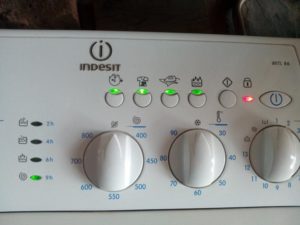 Some models of Indesit automatic washing machines are not equipped with a digital display. If malfunctions occur, the equipment, thanks to the self-diagnosis system, signals breakdowns by flashing the indication on the main panel. To repair the washing machine, you need to decipher which element is failing. Let's figure out how to recognize errors by the blinking of the indicator, how to correctly interpret the signals supplied by the device.
Some models of Indesit automatic washing machines are not equipped with a digital display. If malfunctions occur, the equipment, thanks to the self-diagnosis system, signals breakdowns by flashing the indication on the main panel. To repair the washing machine, you need to decipher which element is failing. Let's figure out how to recognize errors by the blinking of the indicator, how to correctly interpret the signals supplied by the device.
Common error manifestation
The washing machine breaks down when you least expect it. The user, out of habit, places the laundry in the drum and starts the wash cycle. However, contrary to normal operation:
- the washing does not start, instead, the lights on the control panel blink;
- the process starts, but after a certain time the machine freezes, stops functioning, and the LEDs on the panel light up or blink.
The washing cycle can be interrupted at any stage: soaking, rinsing, spinning, draining. A lit indication coupled with the washing machine stopping operation indicates a malfunction of the equipment. To find a solution to the problem, you need to understand what kind of failure the device is reporting. Deciphering blinking indicators is not as difficult as it might seem at first glance. In this article we will try to describe all possible fault codes and the corresponding indication. To decrypt errors, you should:
- find out the type of your Indesit washing machine by the first letters in the model name;
- understand which combination of light bulbs is lit;
- Based on the description presented in the article, identify the alphanumeric designation of the error code indicated by the self-diagnosis system of the machine.
You can often find out the cause of the breakdown and repair the washing machine yourself. However, if you find it difficult to decipher the code by the blinking lights, you can invite a qualified technician to help identify the problem and fix it.
Manifestation of codes in models: IWSB, IWUB, IWDC, IWSC
In the described models of Indesit washing machines, the user is informed about a breakdown by the UBL light bulb and LEDs, which normally show the stages of washing (rinsing, spinning, draining). Also, the lights may blink, usually responsible for additional options of the machine. We will provide a brief description of which indicators will light up for specific error codes:
- F02 (F2) – only indicator 2 is lit;
- F03 (F3) – indicator 1 and 2 are lit;
- F04 (F4) – only indicator 3 is active;
- F05 (F5) – indicators 1 and 3 are activated;
- F06 (F6) – lamps 2 and 3;
- F07 (F7) – indication number 1, 2 and 3;
- F08 (F8) – only the fourth indicator lights up;
- F09 (F9) – 1st and 4th indicator;
- F10 – the second and fourth LEDs are on;
- F11 – lights 1, 2 and 4;
- F12 – 3 and 4;
- F13 – lights 1, 3 and 4 are activated;
- F14 – second, third and fourth buttons;
- F15 – lamps 1, 2, 3 and 4 flash;
- F16 – indicator 5 lights up;
- F17 – first and fifth;
- F18 – activation of lamps 2 and 5.
It is by the simultaneous blinking of certain indicators that one can judge whether the washing machine is broken. Carefully observe the control panel and after a few seconds, you will understand what is wrong with the automatic machine.
Designations on typewriters: WISL, WIUL, WIDL, WIL, WITP
These washing machines signal breakdowns in the system by indicating special function buttons and a “Spin” light. To help you determine the malfunction, you should focus on the serial numbers of the buttons when recalculating them from left to right, and not on the names of the functions. Since the latter may differ due to changes in the control panel on the listed machine models.
Any error code will be accompanied by constant rapid flashing of the “Lock” indicator, which is responsible for blocking the hatch door.
So, in the list we will indicate exclusively the numbers of indicators that flash during a particular malfunction:
- F01 (F1) – 4;
- F02 (F2) – 3;
- F03 (F3) – 3 and 4;
- F04 (F4) – 2;
- F05 (F5) – 2 and 4;
- F06 (F6) – 2 and 3;
- F07 (F7) – 2, 3, 4;
- F08 (F8) – 1;
- F09 (F9) – 1 and 4;
- F10 – 1 and 3;
- F11 – 1, 3 and 4;
- F12 – 1 and 2;
- F13 – 1, 2 and 4;
- F14 – 1, 2 and 3;
- F15 – 1, 2, 3 and 4;
- F16 – the indicator Cycle 4 (“Spin”) blinks;
- F17 – lamp 4 and cycle indicator;
- F18 – button number 3 plus spin indication.
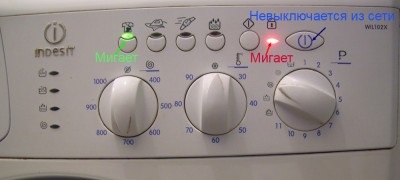
The Indesit washing machine without a display clearly informs the user about a breakdown that has occurred. A clear display will unmistakably indicate any malfunctions that have occurred in the system.
We determine codes for: WIU, WIN, WISN, WIUN
As for these models, the error will also be indicated by the indicators of the additional function buttons and the hatch locking device. In case of any malfunction, the lock indication will quickly flash red. Here is a complete list of failure symbols programmed in the intellect and the corresponding flashing indicator numbers:
- F01 (F1) – 1;
- F02 (F2) – 2;
- F03 (F3) – 1 and 2;
- F04 (F4) – 3;
- F05 (F5) – 1 and 3;
- F06 (F6) – 2 and 3;
- F07 (F7) – 1, 2, 3;
- F08 (F8) – 4;
- F09 (F9) – 1 and 4;
- F10 – 2 and 4;
- F11 – 1, 2 and 4;
- F12 – 3 and 4;
- F13 – 1, 3 and 4;
- F14 –2, 3, 4;
- F15 – 1, 2, 3 and 4;
- F16 – indicator 5 flashes;
- F17 – 1 and 5;
- F18 – 2.5.
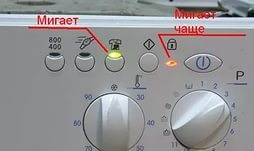
So, by calculating the combination of flashing lights, it is easy to determine the scope of the upcoming repair work. Having found out the source of the malfunction, you can find a solution to the problem and return the washing machine to its previous performance.
Codes on older models: W, WS, WT, WI
If your Indesit washing machine was purchased many years ago, then there are probably only two indicators on its control panel: on/off. unit and hatch door lock.
Such models notify the user of an error by rotating the wash program switch knob in a circle and simultaneously flickering the power button lamp.
The on/off indicator blinks in a cycle with a clear frequency, approximately every 3-5 seconds. The number of flickers of the machine power indication in one series corresponds to the fault code number. For example, a single flashing of a lamp on/off. indicates error F01 (F1), blinking 8 times in a row indicates a breakdown of F08 (F8), lighting with a frequency of 18 blinks indicates code F18. In addition, the “Lock” lamp will also light up.
However, it happens that the Indesit washing machine does not identify the error code. It happens that the control panel simply goes out, or, on the contrary, lights up with all the indicators in a row, which does not correspond to any indication of a breakdown. Based on practice, a completely disconnected panel indicates problems with the washing machine’s power supply, and massively and chaotically blinking indicators indicate a defect in the pulse source of the machine’s control module.
Description of errors
After you find out what fault code the washing machine indicates, it’s time to figure out the interpretation of the designation.
Having an idea of the essence of the breakdown, the user will be able to return the machine to functionality.
Brief description of the error indicators detected by flickering:
- F01 indicates that the machine's electric motor is damaged.
- F02 signals abnormal engine operation.
- F03 indicates damage to the thermostat.
- F04 reports a malfunction of the pressure switch (in other words, the water level sensor).
- F05 informs about damage to the pump.
- F06 tells about a button (command) error.
- F07 indicates that the pressure switch does not function after water has been drawn.
- F08 confirms the failure of the heating element.
- F09 notifies that a control module memory error has occurred.
- F10 indicates an insufficient rate of water entering the tank.
- F11 There is a defect in the drain pump circuit.
- F12 signals a breakdown in communication between the control panel lights and the main module.
- F13 indicates a failure of the drying temperature sensor.
- F14 indicates that the dryer heater has failed.
- F15 The drying heating element relay is damaged.
- F16 indicates that the washing machine drum is blocked (this code is typical only for vertical washing machines).
- F17 informs about a malfunction of the hatch door locking device.
- F18 indicates a violation in the electronic board processor.
- H20 notifies of any problems when filling the tank with water.
Having found out what exactly is broken in the machine’s system, you can begin repairs. It is permissible to fix certain breakdowns with your own hands, for example, a non-professional can do it replace the heating element, pressure switch, thermostat, UBL, drain pump and other elements.However, if the main control unit fails, it is better to entrust the work to professionals. Repairing electronics is difficult if you've never handled them before.
Interesting:
Reader comments
- Share your opinion - leave a comment

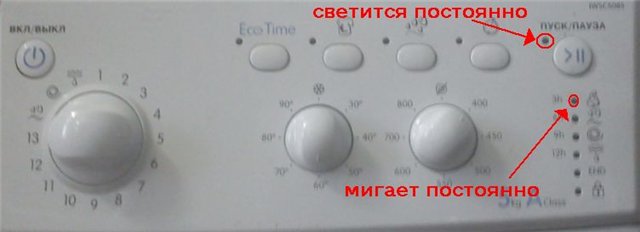
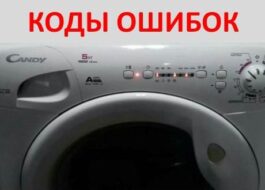
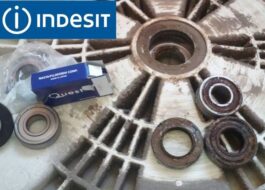
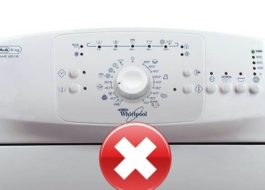
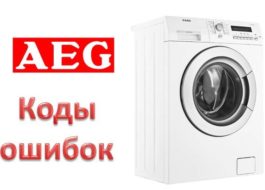
















Add a comment